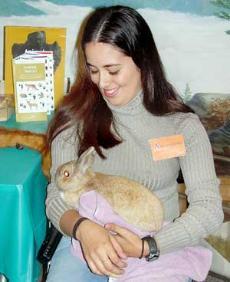North Carolina soil can unearth major discoveries. Archeologists around the state search the clay and topsoil for beads, pots, arrowheads and much more to learn about ancient culture.
An event celebrating archeological discoveries took place this past weekend at the North Carolina Museum of Natural Sciences, an event that scientists hope will become an annual occurrence. The displays, entitled “Archaeology Days” explored finds in North Carolina.
The event, sponsored by the Alcoa Foundation, was held in conjunction with the American Indian Heritage Festival and focused on North Carolina’s ancient human history and archaeological discoveries. Spread out on the first three floors of the museum were 30 different interactive learning stations with information dating back to more than 10,000 years ago.
According to Tara Potts, a member of the North Carolina Archaeological Society, the museum decided to host the event after receiving requests from the society to help raise children’s interest in archaeology.
The NCAS sent out newsletters to different agencies and organizations throughout the state, inviting them to share their discoveries and information about their professions at the event.
Heather Olson, an archaeologist for TRC, shared her work with visitors this past weekend by displaying and sharing her encounters with some of the Native American artifacts she and her colleagues discovered during their excavations.
“We want to show the public that archaeology isn’t just digging. It’s about research, too,” Olson said. “By uncovering these artifacts, we’re able to learn more about the culture and history of North Carolina.”
Other booths captured this idea by portraying a more interactive setting for children. Children learned about Native American pottery by looking at the displays of original pieces of the pottery and then making their own puzzles and necklaces featuring the tribal designs and symbols.
One station let visitors create a bracelet using raffia, yucca and corn husks, different types of “cordage” or natural substitutes for modern day string.
The museum also featured a replica of an archaeological “dig” for younger visitors. In this exhibit, children were able to take tools such as dustpans and hand towels to sift through the dirt and find shards of Native American pottery.
Western Carolina, Appalachian State and Wake Forest were among several of the North Carolina colleges and universities that set up booths this weekend to inform visitors about continuing an education in archaeology or anthropology.
“I’m aiming to engage children in learning about the past. High schools have psychology, sociology and physics classes. Why not anthropology or archaeology? Most people, if they ever do take a course in those subjects, do not do so until college,” said Paul Thacker, an anthropology professor at Wake Forest University. “This needs to change.”
More than 6,300 people visited the exhibits on Saturday, and Thacker estimated just as many had come by on Sunday. He said he is glad the museum decided to make the event an annual production and has many wishes for the future of archaeology.
“We need to make archaeology relevant in schools and to the public in order to preserve the past,” said Thacker.








